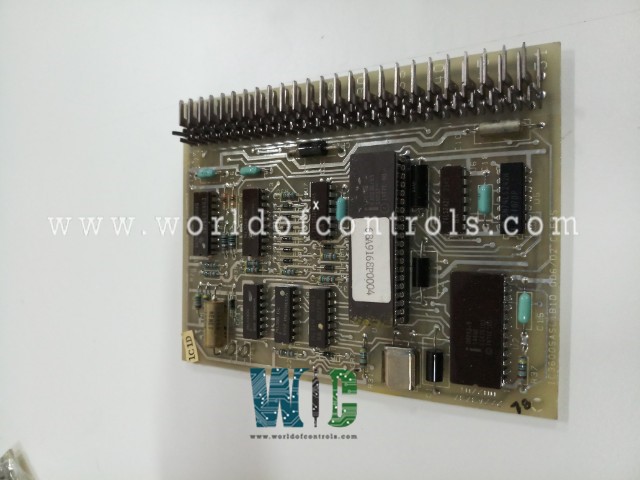
World Of Controls understands the criticality of your requirement and works towards reducing the lead time as much as possible.
IC3600SASC1B1D - Microsynchronizer Card is available in stock which ships the same day.
IC3600SASC1B1D - Microsynchronizer Card comes in UNUSED as well as REBUILT condition.
To avail our best deals for IC3600SASC1B1D - Microsynchronizer Card, contact us and we will get back to you within 24 hours.
SPECIFICATIONS:
Part No: IC3600SASC1B1D
Manufacturer: General Electric
Product Type: Microsynchronizer Card
Series: Mark II
Operating temperature: -30 to 55 ºC
Power Supply Voltage: 24 V dc
Board Size: 2.5 cm high x 8.5 cm
Weight: 0.48 kg
Availability: In Stock
Country of Origin: USA
FUNCTIONAL DESCRIPTION:
IC3600SASC1B1D is a Microsynchronizer Card manufactured and designed by General Electric as part of the Mark II Series used in GE Speedtronic Gas Turbine Control Systems. A Microsynchronizer Card is a device used in electronic systems, often for synchronizing signals, managing timing, and coordinating communication between different parts of a system. It can be particularly useful in telecommunications, data communication networks, and any application where precise timing and synchronization are crucial. The card typically includes circuitry for generating clock signals, and phase-locking mechanisms, and may feature interfaces for connecting to various components or systems.
WOC has the largest stock of OEM replacement parts for GE Speedtronic Control Systems. We can also repair your faulty boards and supply unused and rebuilt boards backed up with a warranty. Our team of experts is available round the clock to support your OEM needs. Our team of experts at WOC is happy to assist you with any of your automation requirements. For pricing and availability on parts and repairs, kindly contact our team by phone or email.
What is a Microsynchronizer Card?
A Microsynchronizer Card is a device used in electronic systems, particularly in turbine control systems, to synchronize signals, manage timing, and coordinate communication between different components.
What is the role of a Microsynchronizer Card in turbine control systems?
It ensures precise timing and synchronization of signals related to turbine operation, such as fuel injection, exhaust management, and sensor data processing. This helps in maintaining safe and efficient turbine performance.
How does a Microsynchronizer Card improve turbine operation?
By synchronizing and coordinating signals accurately, it helps optimize turbine efficiency, reducing operational risks, and enabling quick response to faults or abnormal conditions.